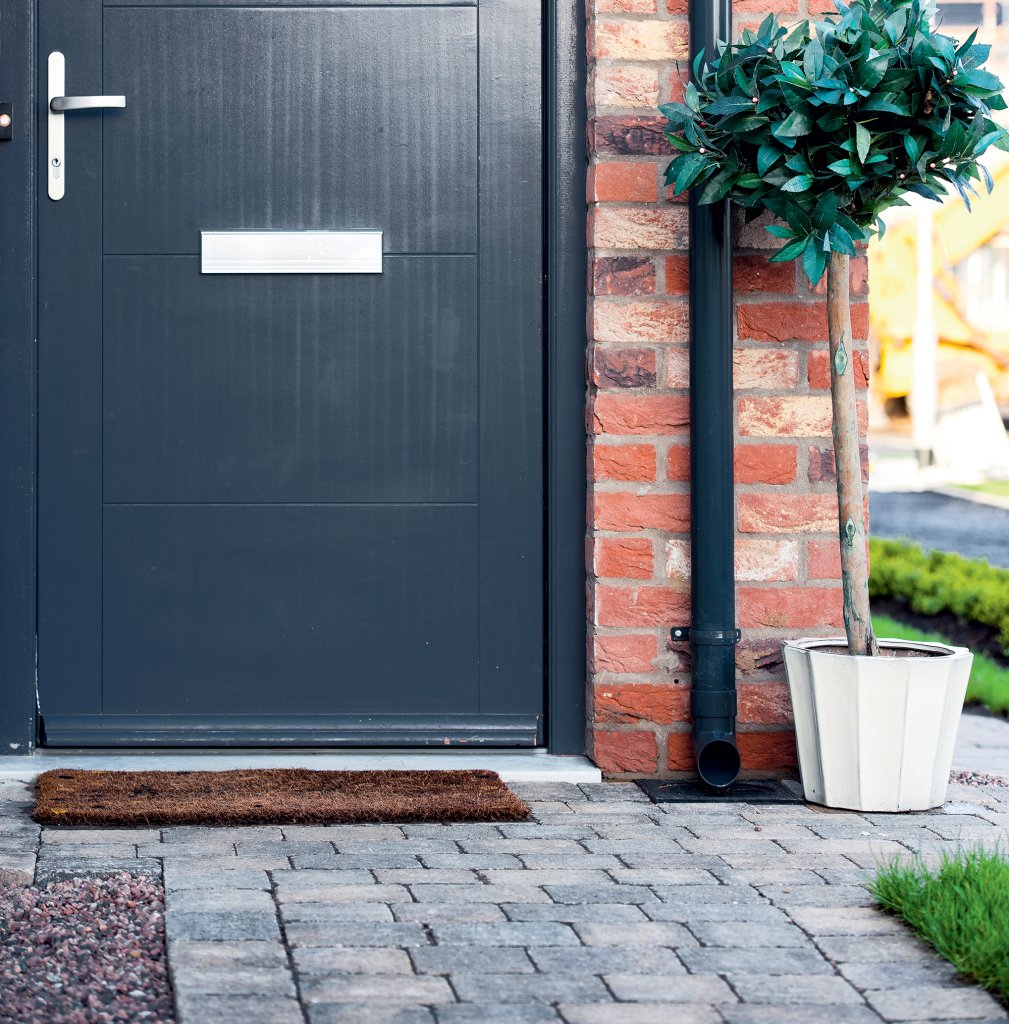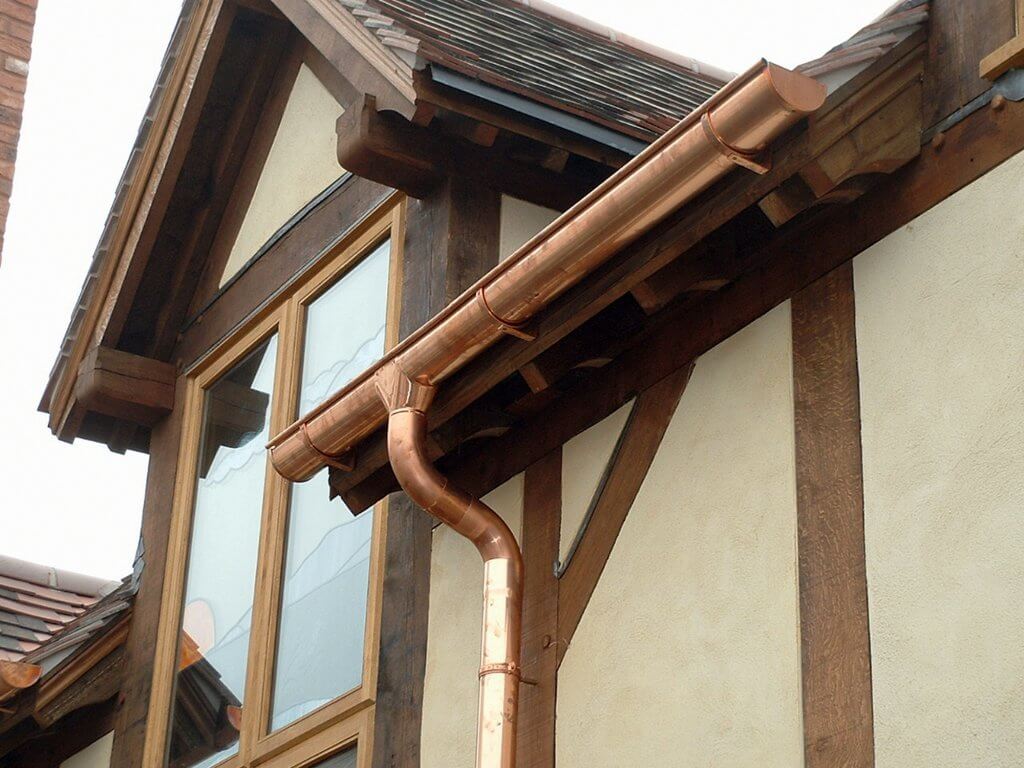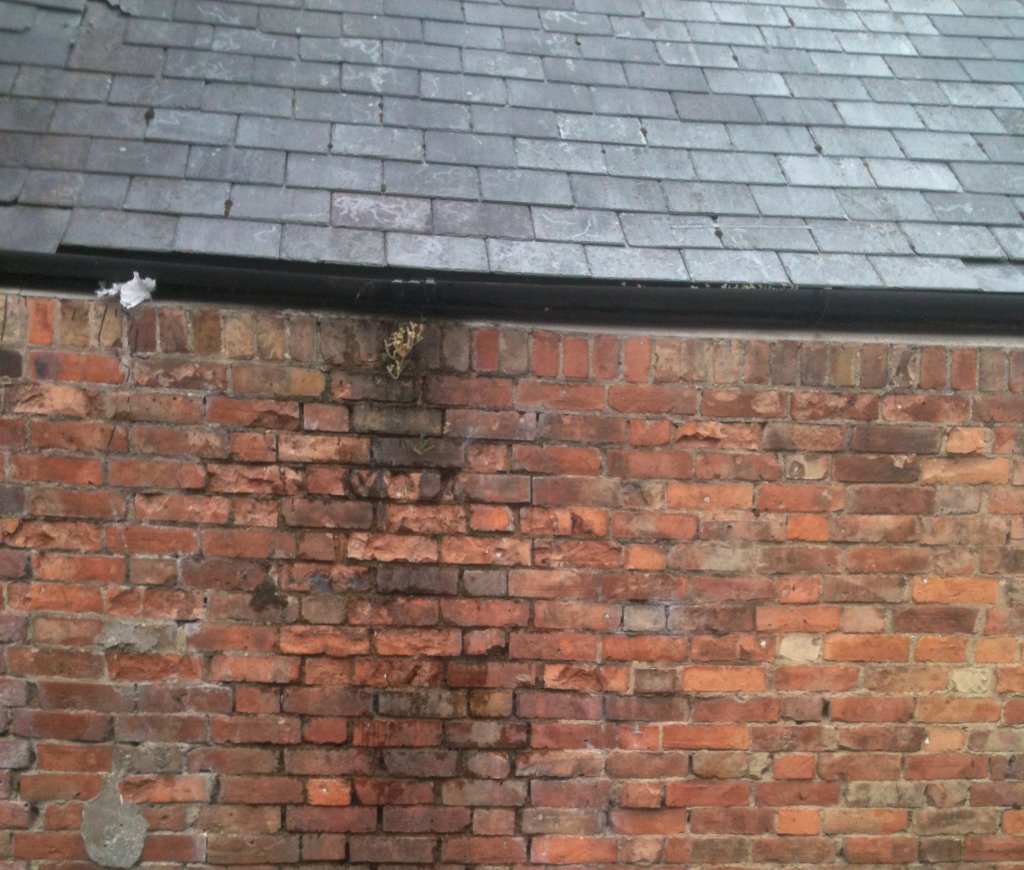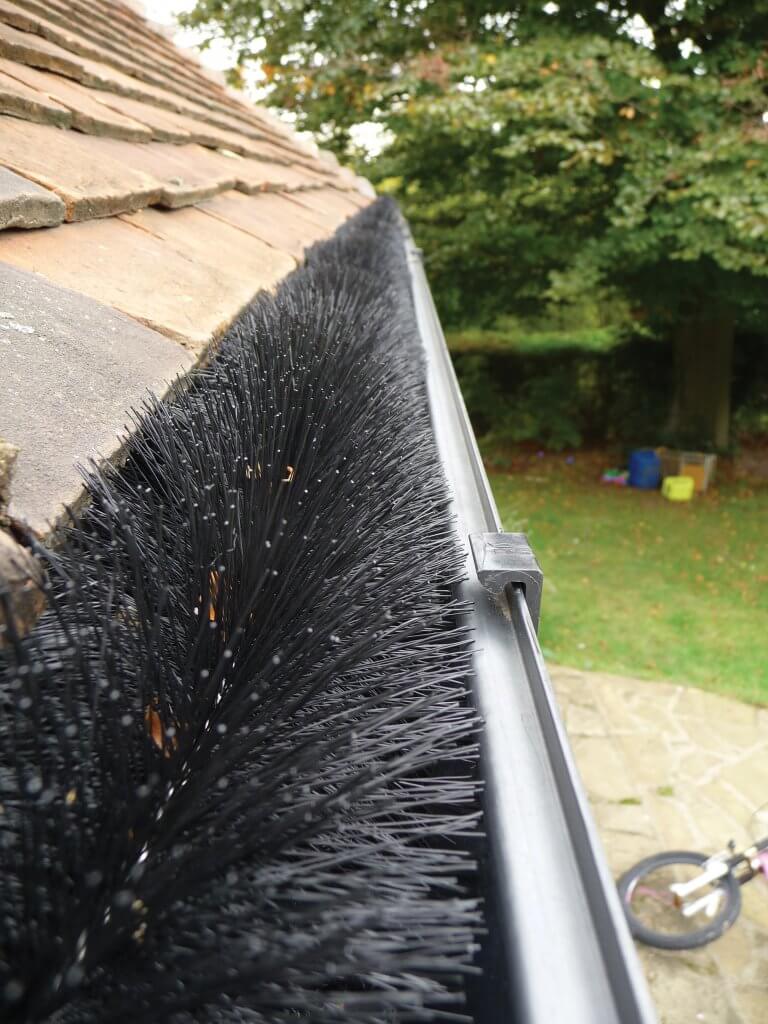

Given the British climate, it’s fair to say that water is probably the biggest threat to our homes. If it gets into the fabric and starts saturating the core materials, this could lead to mould, decay and – ultimately – structural failure.
It’s crucial, then, that rainwater is properly collected and channelled away from your home via well-maintained guttering.
But it’s not just about the practicalities: more often than not, these goods are highly visible elements of your property, so they need to look smart and in-keeping with the architecture, too.
Read more: 15 Ways to Add Value & Kerb Appeal
Assessing the state of your guttering and downpipes doesn’t have to be taxing.
Ideally, you should give the system a check over at least once a year – and the best time to do it is in late autumn after the trees have shed their leaves. This way, you can catch any blockages and other issues before the worst of the weather sets in.
If it’s raining, it will be even easier to spot signs of damage (bear in mind if you’re going up at height you should only do so if you have a suitably safe ladder or platform).
Rain will hit the roof covering first, so make sure there are no obvious signs of damage to the tiles.
Follow the path the water would take as it passes through the guttering and downpipes and look for obvious issues such as blockages, cracks, rust etc.
Even if there are signs of damage, it may be possible to repair parts of the setup rather than go through the costly process of replacing it wholesale.
Here are some simple steps you can take to help keep the system in good nick:


If gutters are blocked, they’ll overflow – potentially allowing water into soffits, fascias and rafter ends. It may even seep into the wall as it runs downwards.
Meanwhile, obstructions in the downpipes could lead to water freezing, and as it expands it can cause cracks.
So, get some heavy duty rubber gloves on and clear out any leaves or other debris. Afterwards, flush the setup with a garden hose to check everything’s in order.
Maintaining your gutters in the future will be a whole lot easier with guards in place to minimise the amount of debris that gets into the system.
These can take the form of grilles and meshes that clip over the top, or brush-type versions that sit in the conduit.
Gutters can end up taking significant weight at certain times of the year, especially under the load of snow and ice, so they need to be properly affixed to the walls or fascias.
As a rule of thumb, there should be a bracket every metre – which must be strongly fixed. If the conduits are sagging, simply adding more brackets could be enough to extend their service life. Junctions and other weak points will need extra support, and may need re-securing or replacing over time.
You might think these would be easy to spot, but many issues actually appear at the rear of the gutter or downpipe.
In some older installations, these conduits may be fitted almost snug to the wall, making it tricky to gauge their condition – not to mention much more difficult to maintain cast-iron goods. In general, cracked lengths of pipe can be replaced individually.


Gutters must be fitted with a slight slope towards the downpipe – typically at a fall of between 1:350 and 1:600 (or 1cm in every 3.5m to 6m).
If the gradient is insufficient, the rainwater won’t flow properly. If it’s too steep, it will spill over the gutters. This issue can be resolved by realigning the conduits and repositioning/replacing any brackets as necessary.
A top tip here is not to rely on the fascia for judging the fall, as this may not have been fitted level.
Modern systems usually discharge from the base of the downpipes into trapped gullies, which should be covered with a grate and will need to be cleaned of silt and debris regularly.
These should have a little water at the bottom – if not, it could indicate there’s a crack at the base, which might allow moisture to reach the foundations.
The water should run straight into the gulley – if it runs over the top or back towards the property, you may need to direct it with a shoe fitted at the base of the downpipe. If it’s overflowing, there’s likely to be a blockage.
With reasonable maintenance you should be able to extract decades of service out of a well-designed and properly-installed rainwater management system.
A lot will depend on the material, however – some original Victorian cast iron gutters are still offering excellent service today, for instance, albeit they’ll require regular repainting and repair. PVCu, on the other hand, will have much a shorter shelf life but shouldn’t need much attention over that time (provided it’s a good-quality product).
Case study: Low-maintenance guttering alternativeKerry and Mark were keen to include low-maintenance elements in the renovation wherever possible, and the rainwater system their architect, Gavin Woodford, recommended fitted the bill perfectly. Replacing the dated 1960s guttering with galvanised steel conduits from Lindab streamlined the form of the roof, creating a pleasing structure that blends well with the rural aesthetic of the property. The couple selected a material that weathers well, adjusting organically to its environment within three to five years, acquiring an attractive dark grey metallic sheen. It is also highly durable. |
The trick to knowing when to repair and when to replace comes down to judging the extent of any issues and the potential costs of each route.
If the gutters are solid, don’t leak, aren’t sagging and there’s no sign of separation at the joints, then there’s unlikely to be much cause for swapping them out.
In addition, damage can sometimes be more superficial than it looks.
Paint peeling from metal gutters may look shoddy, for instance, but high-quality products can often be redecorated to look as good as new and provide many years more service.
Cracked or corroding sections should be replaced, but this might not necessarily dictate an overhaul of the entire setup.
Of course, there are cases where it makes sense to consider a more wide-scale replacement. Maybe the gutters simply don’t have the required capacity to deal with local rainfall; or the wrong shape and profile has been fitted at some point (either in terms of handling flow or for aesthetic reasons).
It might be that you’re buying a rundown property where the rainwater goods haven’t been well-maintained and have reached the end of their useful life. Cracks, leaks at multiple joints and issues such as products that have suffered thermal movement could all indicate it’s time to upgrade.
Guttering materialsCast iron: This is a premium product, typically costing around three times the price of standard PVCu – but offering a life expectancy of at least 40 years. Modern factory-painted versions are strong, durable and available in a range of heritage-style colours. If your home features original cast iron guttering, look to conserve it wherever possible. Aluminium: Offers a very similar aesthetic to cast iron but weighs considerably less, so it’s easier to install. Powder-coated products are durable and corrosion-proof, so they’re a low-maintenance option – as well as being slightly more affordable. Plastic: PVCu is the most affordable option upfront, and quality has improved dramatically – with better seals and more attractive profiles. Avoid ultra-cheap versions as they may be prone to thermal expansion and contraction, which is likely to cause leaks. An interesting alternative is GRP (glass reinforced plastic) which can be moulded to look very authentic. Copper: An expensive but highly individual option that’s well-suited to making a statement on barn conversions, timber homes, outbuildings and contemporary extensions. It’s extremely durable and very low-maintenance. |
If you live in a period property that retains its original cast iron gutters, these are likely to form an important part of its character – so you should always look to repair first in order to preserve the house’s value.
One common issue is that the gutters and downpipes are fitted too close to the wall, making it difficult to gain access for refinishing, so consider fitting large brackets to provide more space.
If sections do need replacing, it’s worth spending extra on like-for-like, factory-painted cast iron (and this may be a necessity if you live in a listed building).
That said, we’ve moved on a lot from the cheap-looking plastics of the 1990s (which promised low maintenance but proved to be poor quality). Modern alternatives in aluminium, GRP and even PVCu can fit comfortably in many settings, and all could be strong options where you’re replacing cheaper plastic.
Don’t forget about profiles and colours, either. If there’s no reference point on your own property, look to local architecture and similar houses for your cue. Ogee (K-shaped) and beaded half-round versions tend to work especially well for period renovation projects.
There’s no point in making wholesale changes without ensuring the rest of the setup is up to scratch – so check fascias are in good condition (replace any that are rotting). Consider tackling the below-ground part of the system, too. Simple P-traps could be replaced with rod-able bottle gullies for easier maintenance, for instance.